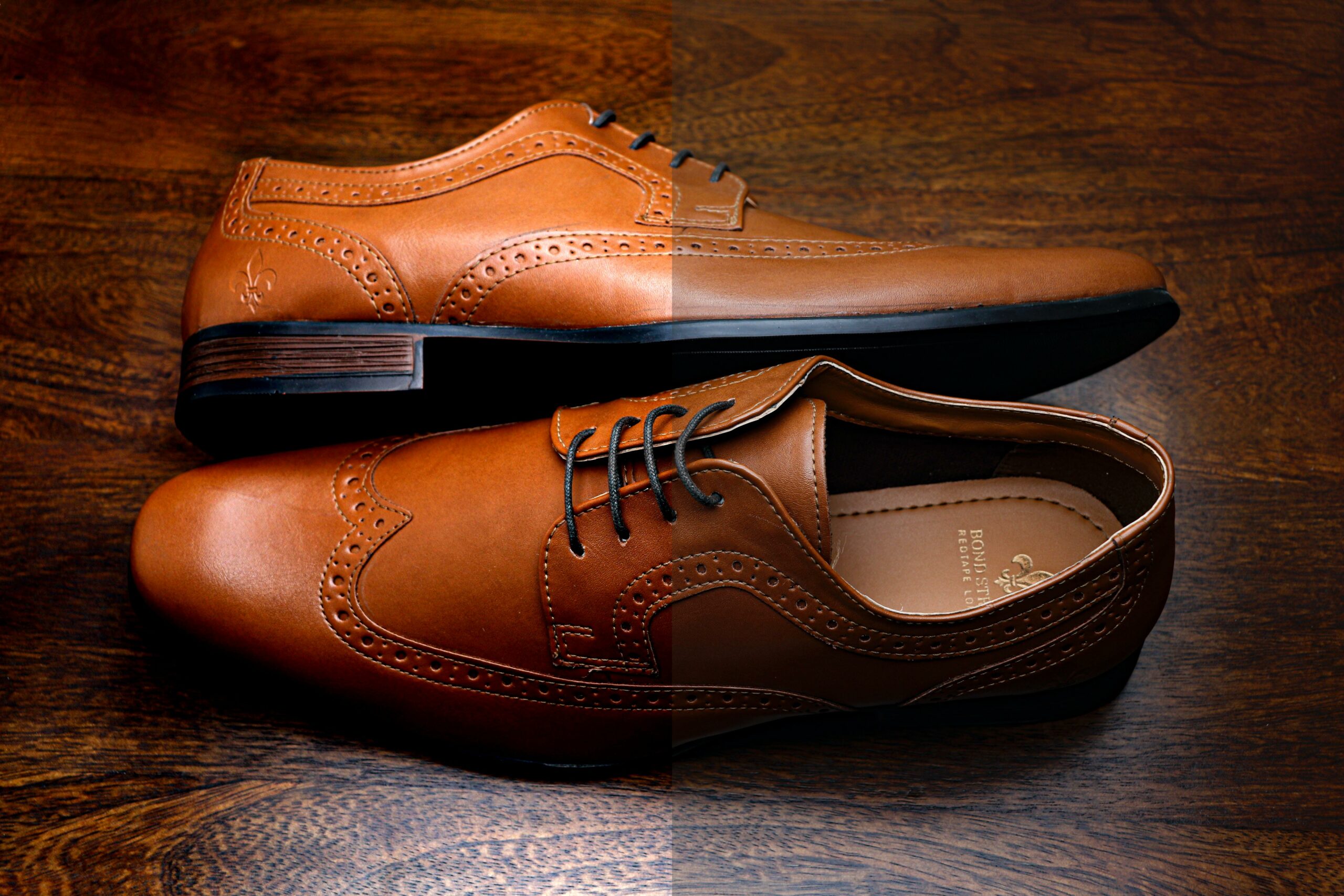Are you ready to delve into the captivating realm of footwear trends? Get ready to be amazed, as we lift the lid on the mesmerizing world of shoe facts! From the groundbreaking technologies revolutionizing shoe designs to the untold stories behind your favorite shoe brands, we’re here to unravel it all. In this article, we’ll take you on a thrilling journey through the latest discoveries and developments in the shoe industry. So, buckle up and prepare to be astounded by the fascinating facts that are shaping the footwear landscape today.
Facts About Shoes Today
Shoes have always been an essential part of our lives, protecting our feet and adding a touch of style to our outfits. But did you know that there’s more to shoes than meets the eye? In this article, we’re going to dive deep into the fascinating facts about shoes today. From their history and materials to cultural influences and mind-boggling price tags, get ready to uncover the secrets behind the footwear we can’t live without.
Let’s start with a material revolution that has transformed the shoe industry. While leather, wood, and canvas were once the go-to materials for shoemaking, we now see an increasing use of rubber, plastics, and other petrochemical-derived materials. This shift not only allows for greater flexibility and durability but also addresses sustainability concerns. [Facts About Shoes Today]: Did you know that approximately 90% of shoes end up in landfills because their materials are hard to separate, recycle, or reuse? This alarming statistic highlights the need for innovation and sustainable practices in the shoe manufacturing process.
Now, let’s take a step back in time. The oldest shoes ever found date back around 8,000 years ago and were crafted from wood and animal skin. It’s awe-inspiring to imagine our ancestors wearing these primitive yet functional foot coverings. [Facts About Shoes Today]: Can you believe that the concept of heels was initially devised to make walking on hot sand easier? Middle Easterners introduced heels as a practical solution to combat the scorching sand beneath their feet.
Speaking of heels, did you know that high heels were first worn by men? Yes, you heard that right. High heels were initially designed as horse-riding footwear for men, providing stability and grip in the stirrups. It wasn’t until later that women began embracing this fashion statement themselves. [Facts About Shoes Today]: The evolution of high heels demonstrates how societal norms and fashion trends can shape the perception and usage of footwear.
Now, let’s shift our focus to the world of luxury shoes. While expensive shoes are not uncommon, Antonio Vietri’s Moon Star shoes take opulence to a whole new level. Valued at nearly $20 million, these shoes are adorned with diamonds, sapphires, and zirconias, creating a spectacle that only a fortunate few can afford. [Facts About Shoes Today]: Discovering extravagant creations like these reminds us of the extensive range and sheer extravagance that exists within the shoe industry.
In conclusion, the journey of shoes is one that intertwines history, culture, and innovation. From the evolution of materials to the birth of iconic styles, shoes are far more than mere accessories. [Facts About Shoes Today]: They reflect the ever-changing trends and attitudes of our society while simultaneously serving practical purposes. As we move forward, let us continue to explore and celebrate the wonders of the shoe industry, always mindful of sustainable practices and the stories woven into every pair we wear.
In the world of fashion, there are so many fascinating facts about shoes waiting to be discovered. From the history and evolution of shoe styles to the interesting materials used in their creation, the world of shoes is full of surprises. If you’re curious to learn more about shoes and expand your knowledge, we encourage you to check out our curated collection of facts about shoes. With each click, you’ll unveil a plethora of captivating information that will leave you amazed. So, grab a cup of coffee, get comfortable, and click here to dive into the wonderful world of footwear: facts about shoes. Happy reading!
27 Fascinating Facts About Shoes
[youtube v=”h3XRe5IUSc4″]
Shoes are a widely recognized and essential part of our daily lives. They not only protect our feet but also serve as a fashion statement. In this article, we will uncover some intriguing facts about shoes that you may have never heard of before. Let’s dive in!
1. Men Wore High Heels Before Women
For centuries, high heels were not exclusively worn by women. In fact, they were initially a symbol of higher social standing and were commonly worn by men. Additionally, men wore high heels while riding horses to provide a better fit into their stirrups.
“High heels were a sign of higher social standing rather than gender.”
2. The Nike Swoosh Was Designed for $35
The iconic Nike Swoosh logo was created by a Portland State student named Carolyn Davidson. She was only paid $35 for her design but was later given stock in the company, which is now valued at over $640,000.
“The Nike Swoosh, designed by a Portland State student for $35, is now worth more than six hundred and forty thousand dollars.”
3. Dorothy’s Ruby Red Slippers Are the Most Expensive Shoes Ever Sold
The iconic ruby red slippers worn by Dorothy in the movie “The Wizard of Oz” were sold for an astonishing $660,000. These shoes are considered as one of the most expensive pairs ever sold.
“Dorothy’s iconic ruby red slippers from ‘The Wizard of Oz’ were sold for six hundred and sixty thousand dollars.”
4. The Invention of the Right Shoe
Believe it or not, the right shoe as we know it today was not invented until 1818. Prior to this, shoes had no distinct left or right. The first pair of left and right shoes was invented in Philadelphia.
“It wasn’t until 1818 that the right shoe was invented, before that shoes had no distinct left or right.”
5. The Origin of the Name “Reebok”
When choosing a name for their company, Jeff and Joe Foster, the founders of Reebok, initially wanted to call it “Mercury Footwear.” However, they discovered that the name was already taken. Instead, they randomly selected the word “Reebok” from a dictionary, which referred to a type of South African gazelle.
“The name ‘Reebok’ was randomly selected from a dictionary and meant a light, graceful South African gazelle.”
6. Bill Nye the Science Guy Designed a Ballet Shoe
Bill Nye, the famous science educator and television personality, designed a patented ballet shoe. This shoe was specifically created to protect ballet dancers’ feet from injuries while performing.
“Bill Nye the Science Guy designed a ballet shoe to help protect the feet of ballet dancers.”
7. The Story Behind Havaianas Flip-Flops
The popular Havaianas flip-flops were inspired by the Japanese zouri sandals. These flip-flops have a textured pattern resembling rice, as they were originally made from rice straw and fabric straps.
“The iconic Havaianas flip-flops were inspired by the Japanese zouri sandals made of fabric straps and rice straw.”
8. The Origins of Doc Martens Boots
Dr. Martens boots were initially created as practical footwear for working-class individuals. They were invented by Dr. Klaus Martens and his friend Dr. Herbert Funk. The boots became popular in the 1960s thanks to British punk music.
“Doc Martens boots were originally created as a practical working man’s shoe but gained popularity through British punk music.”
9. The Psychological Impact of Buying Shoes
According to psychologist Suzanne Farris, women’s desire to buy shoes triggers a specific area in the brain called the prefrontal cortex. This area is known as the “collecting spot,” which makes women view shoes as collector’s items rather than just a functional accessory.
“A woman’s desire to buy shoes triggers an area in the brain called the collecting spot, which makes women view shoes as collector’s items.”
10. Shoe Size and Its Connection to Longevity
A study conducted by Swedish epidemiologists found a correlation between shoe size and longevity. Individuals with extremely large or small feet tend to have a shorter lifespan compared to those with average-sized feet.
“Those with extremely large and small feet have been found to have shorter lifespans compared to those with average-sized feet.”
11. Shoe Size as an Indicator of Growth Spurts
Harvard Medical School states that during puberty, the hands and feet grow before the long bones. Therefore, an increase in shoe size can be an early indicator of an upcoming growth spurt for many teenagers.
“During puberty, an increase in shoe size can be an early indicator of a growth spurt.”
12. The Largest Shoe Size and the Tallest Man
Robert Wadlow, the tallest man in recorded history, wore a staggering shoe size of 36 and a half. Standing at a height of 8 feet 11 inches, his feet were 17 inches long.
“The tallest man in history, Robert Wadlow, wore a shoe size of 36 and a half and had 17-inch-long feet.”
13. The World’s Largest Shoe
The largest shoe ever made measures a remarkable 17 feet long and 8 feet wide. Although it wasn’t created for the Jolly Green Giant or the Stay Puft Marshmallow Man, these shoes can be seen on display at a museum in the Philippines.
“The largest shoe ever made measures 17 feet long and 8 feet wide and is on display at a Chu Museum in the Philippines.”
14. Chuck Taylor and the Iconic Converse Sneakers
Chuck Taylor, a professional basketball player and shoe salesman, gave his name to the popular Converse sneakers. His name was added to the shoe in 1932, and since then, Chuck Taylors have become the best-selling basketball shoe of all time.
“Chuck Taylor, a professional basketball player, is associated with the iconic Converse sneakers, which are the top-selling basketball shoe of all time.”
15. Shoe Models and Their Unique Sizes
Shoe models, similar to fit models, play a significant role in the shoe industry. They wear sizes ranging from 5 or 6 for women’s shoes to 8 or 9 for men’s shoes. These models often participate in runway shows to showcase the latest shoe designs, although these shows are rarely publicized.
“Shoe models typically wear sizes 5 or 6 for women’s shoes and 8 or 9 for men’s shoes, showcasing the latest designs in runway shows.”
16. The Culture of Removing Shoes Indoors in Japan
In Japan, it is customary to remove shoes before entering a house or building. Instead, people wear slippers, known as “labaki,” inside. This practice helps keep the indoor environment clean and prevents the spread of dirt and germs from outside.
“In Japan, it is customary to remove shoes indoors and wear slippers known as ‘labaki’ to maintain cleanliness.”
17. Unique Shoe Traditions at Weddings
Wedding traditions around the world can vary, and some intriguing shoe customs have emerged. For example, in Hungary, the groom drinks a toast from the bride’s wedding shoe. Meanwhile, in China, the bride’s shoe is tossed from a roof for good luck.
“In Hungary, the groom drinks a toast from the bride’s wedding shoe, while in China, the bride’s shoe is tossed from a roof for good luck.”
18. Space Boots and the Moon Landing
When Neil Armstrong became the first person to walk on the moon, his boots were left behind and discarded into outer space for fear of contamination. They were later safely retrieved upon returning to Earth.
“Neil Armstrong’s boots, worn during the first moon landing, were discarded into outer space before being brought back to Earth.”
19. The Origins of Adidas and Puma
Adidas and Puma, two popular sportswear brands, have an interesting backstory. The companies were initially founded by two German brothers, Adolf Dassler and Rudolf Dassler. A miscommunication between the brothers during a bomb shelter visit resulted in a permanent rift. Adolf Dassler went on to establish Adidas, while Rudolf created Puma.
“Adidas and Puma were founded by two brothers, Adolf and Rudolf Dassler, who eventually split up to create their respective brands.”
20. The Genesis of the Nike Brand
Nike, one of the most renowned sportswear brands, almost had a different name. Originally, co-founder Phil Knight wanted to name the company Dimension 6. However, he eventually decided on “Nike,” inspired by the Greek goddess of victory.
“Nike was named after the Greek goddess of victory and almost had a different name, ‘Dimension 6.'”
21. “Just Do It” Slogan and Its Surprising Inspiration
The iconic Nike slogan “Just Do It” was actually inspired by a convicted murderer. Before facing a firing squad in 1977, Gary Gilmore famously said, “Let’s do it.” This phrase caught the attention of Nike’s advertising agency and led to the creation of the memorable slogan.
“The Nike slogan ‘Just Do It’ was inspired by a convicted murderer who said ‘Let’s do it’ before his execution.”
In Conclusion
Shoes hold a unique place in our lives, serving both practical and fashionable purposes. These intriguing facts about shoes shed light on the diverse history, symbolism, and impact of footwear throughout society. So, the next time you put on your favorite pair of shoes, remember the fascinating stories that lie behind them.
FAQ
Q: What are the traditional materials used to make shoes?
A: Traditionally, shoes have been made from materials such as leather, wood, and canvas.
Q: What are some of the newer materials used in shoe manufacturing?
A: With advancements in technology, shoes are increasingly being made from rubber, plastics, and other petrochemical-derived materials.
Q: How large is the shoe industry globally?
A: The shoe industry is a $200 billion a year industry globally.
Q: What happens to most shoes once they are no longer wearable?
A: Unfortunately, 90% of shoes end up in landfills because the materials are difficult to separate, recycle, or otherwise reuse.
Q: What are some interesting historical facts about shoes?
A: The oldest shoes found date back to around 8,000 years ago and were made from wood and animal skin. Additionally, middle Easterners added heels to shoes to make walking on hot sand easier, and men were the first to wear high heels as a form of horse-riding footwear.
- China II Review: Delicious Food & Speedy Service - April 17, 2025
- Understand Virginia’s Flag: History & Debate - April 17, 2025
- Explore Long Island’s Map: Unique Regions & Insights - April 17, 2025
















